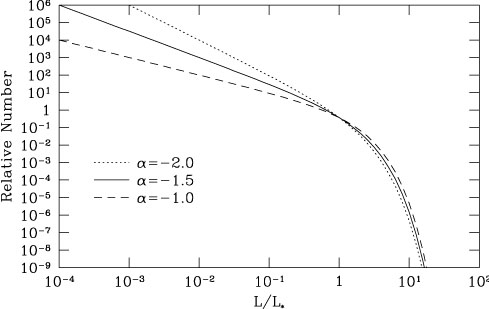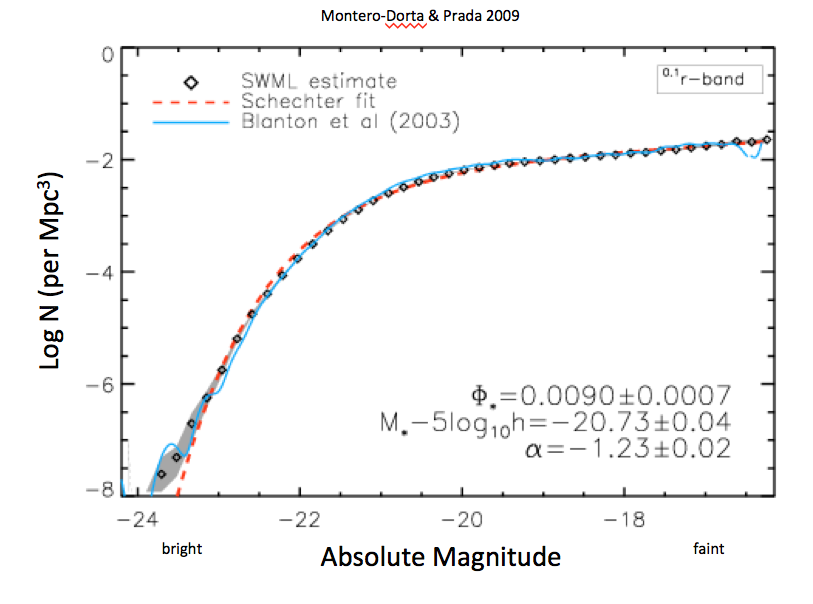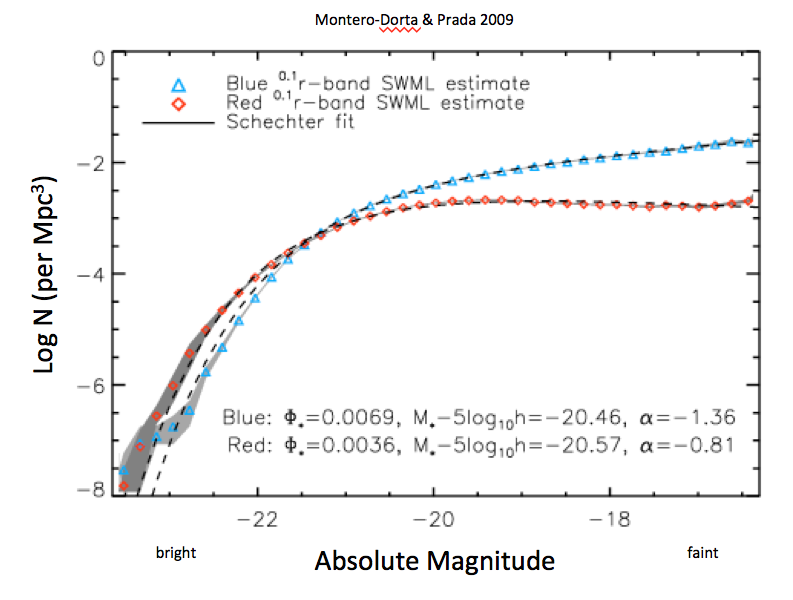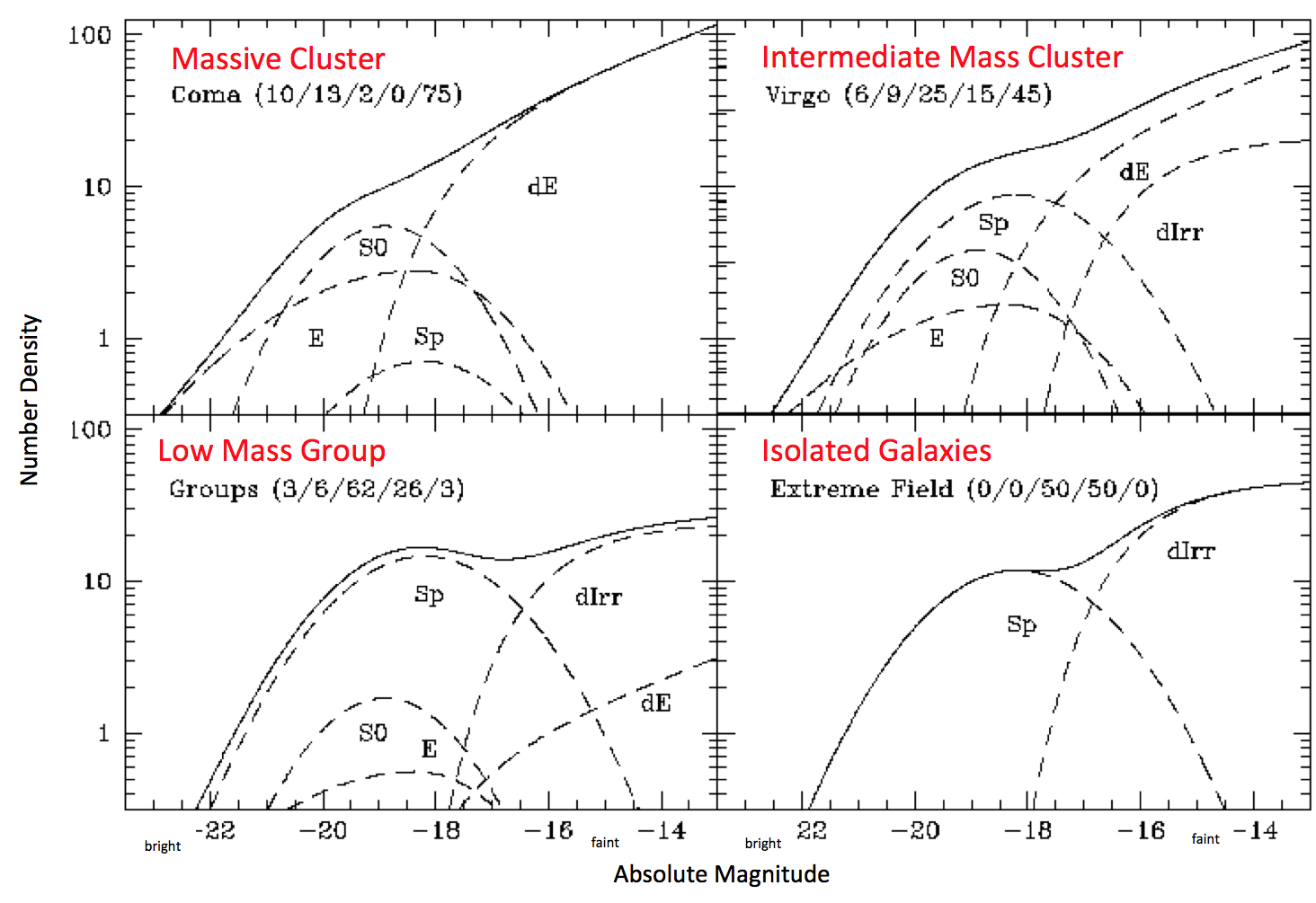
About 3/4 of big galaxies in the field are spirals.Spiral galaxy scale lengths run from ~ 1 kpc (dwarfs) to ~ 50 kpc (giant LSBs like Malin 1)
They have absolute magnitudes from -16 to -23 (that's a factor of ~ 1000 in luminosity)
Masses from 109 - few x 1012 Msun
So in these terms, the Milky Way is a big spiral galaxy, but not the most extreme.
About 20% of big field galaxies are ellipticals, but in clusters of galaxies, ellipticals dominate.Ellipticals have a wide range of properties. There are
E's (normal ellipticals)We'll talk about these more down the road...
cD's (massive bright ellipticals at the centers of galaxy clusters)
dE's (dwarf ellipticals)
dSph's (dwarf spheroidals)The size of an elliptical galaxy is characterized not by a scale length, but by its effective radii, the radius which encloses half the light. (For comparison, the effective radius in an exponential disk is 1.7 times the scale length...)
Sizes run from a few tenths of a kpc (dE's) to tens of kpc (cD's)
Absolute magnitudes from -10 (dSph's) to -25 (cD's) (and that's a factor of 106 in luminosity)
Masses go from 107 Msun (dSph's) to 1013 - 1014 Msun (cD's)
In fact, the elliptical sequence is not a continuous sequence physically. cD's, E's, dE's, and dSph's are all structurally, kinematically, and physically different objects. It's not just a question of scale!
Irregulars make up a few percent of the field galaxy population.Generally (but not always!) smaller galaxies: sizes of a few kpc
Absolute magnitues of -13 to -20
Masses of 108 to 1010 Msun

|
|
 |
Rough
numbers for the parameters:
|
Observed Luminosity Function (SDSS DR 6, All Galaxies):


